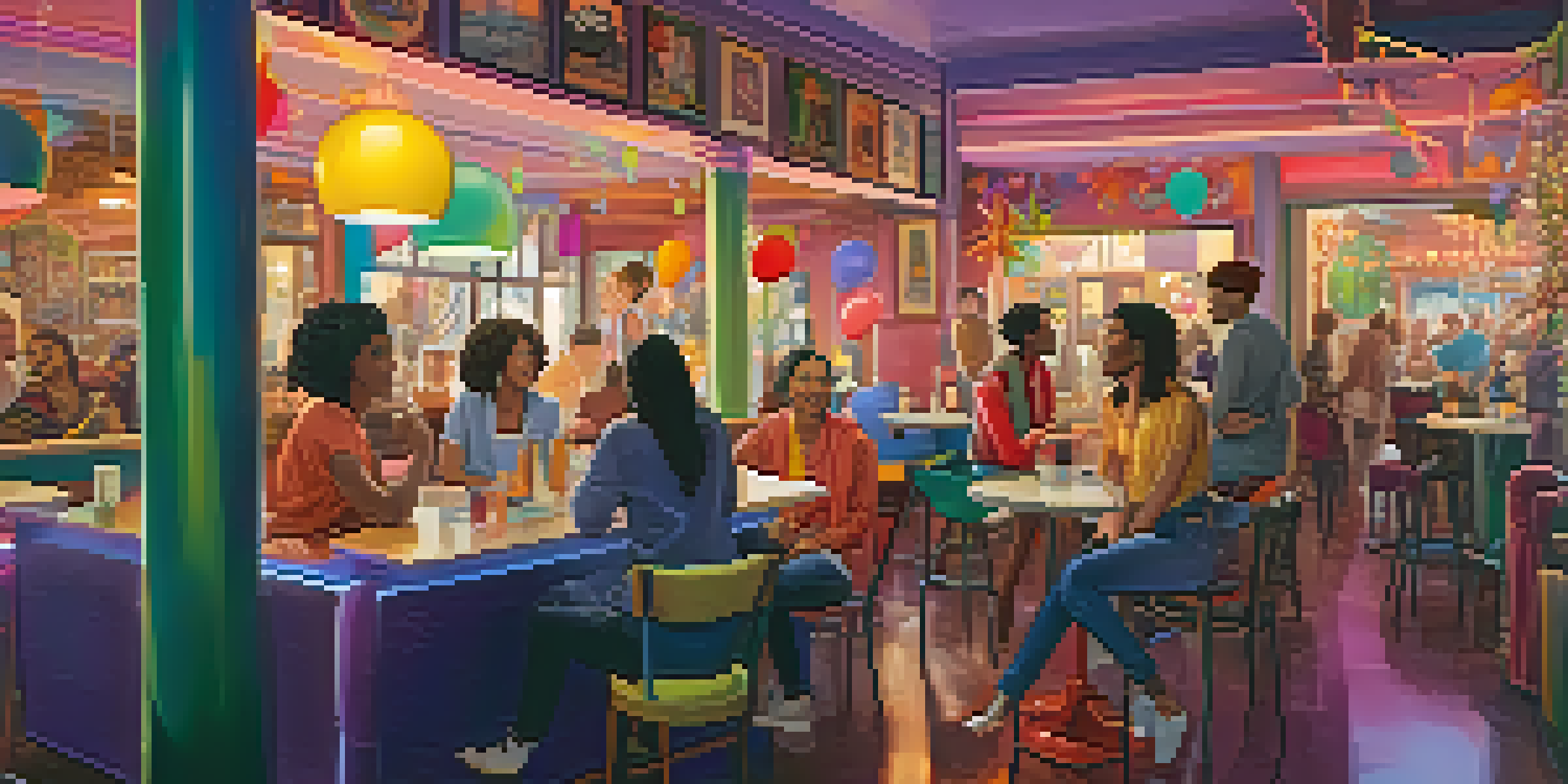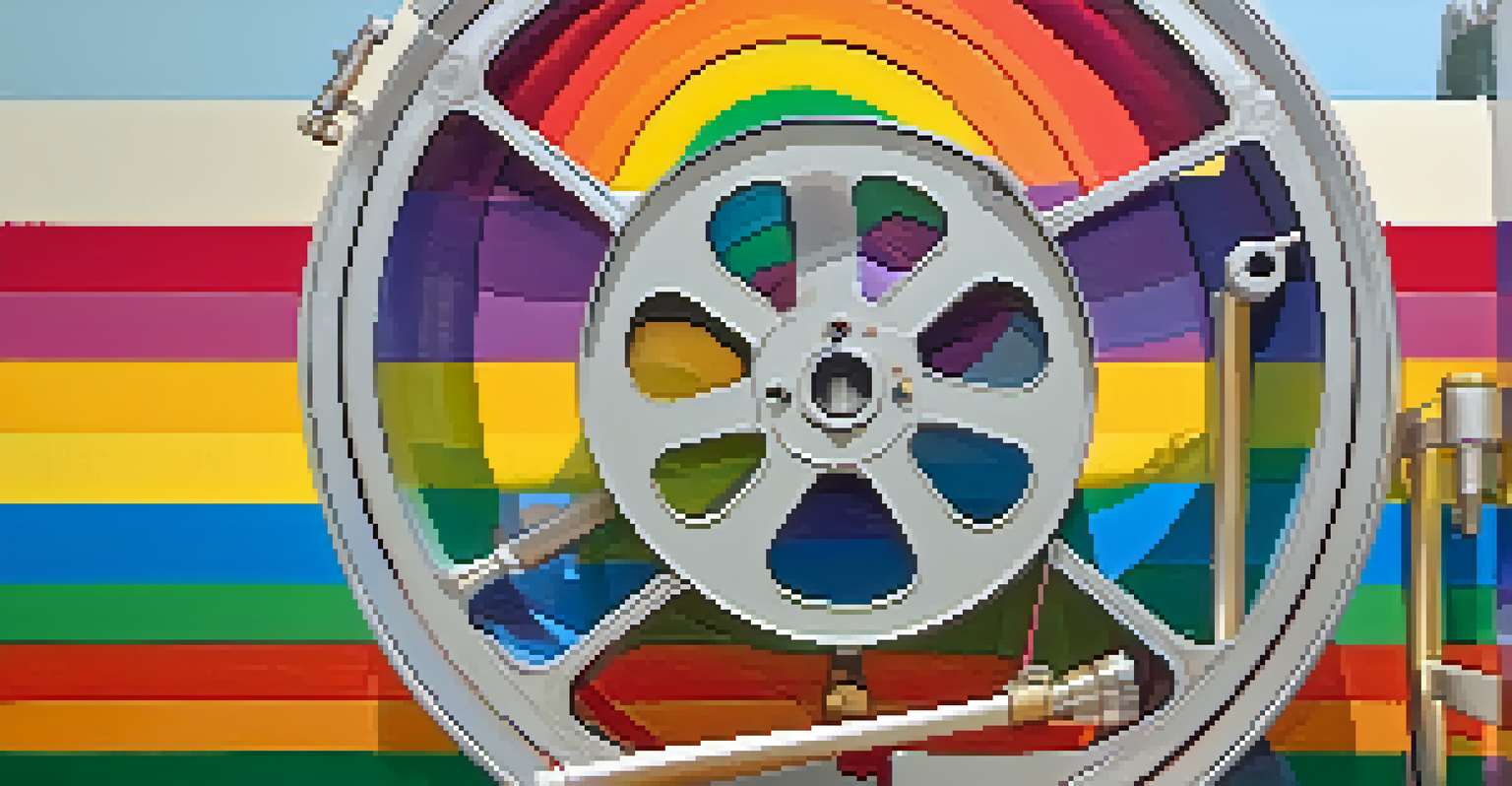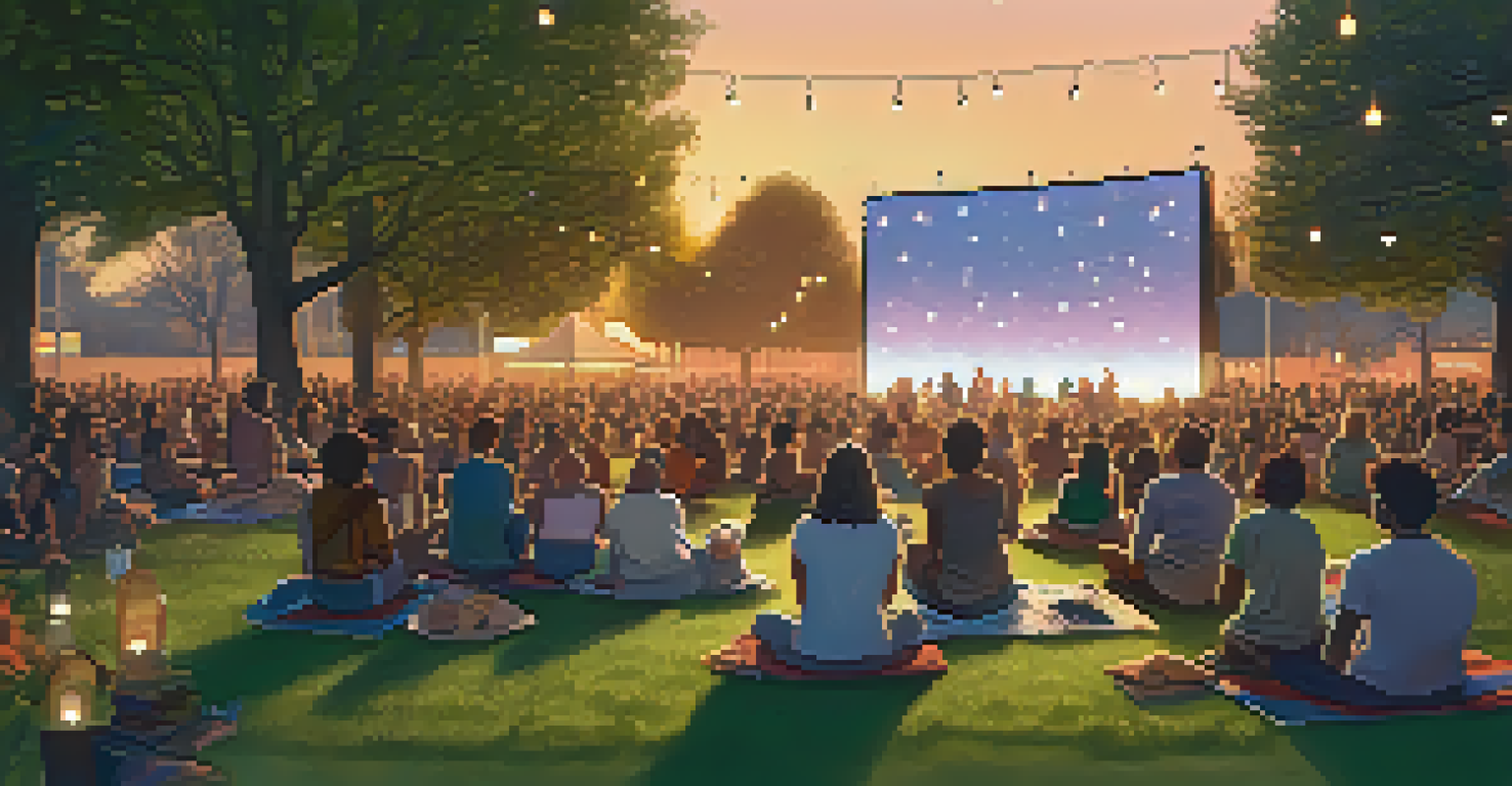Queer Cinema: Challenging Norms and Celebrating Identity

The Evolution of Queer Cinema: A Brief History
Queer cinema has a rich and complex history that dates back to the early 20th century. Initially, LGBTQ+ representations were often hidden or coded, reflecting society's discomfort with non-heteronormative identities. As time progressed, filmmakers began to push boundaries, creating films that openly explored queer themes and characters, paving the way for future generations. Notable early works, like 'The Children's Hour' and 'Paris, Texas,' challenged societal norms and set the stage for more authentic queer storytelling.
Cinema is a mirror by which we often see ourselves.
The 1990s marked a significant turning point, with films like 'Paris is Burning' and 'Boys Don’t Cry' bringing queer narratives to mainstream audiences. These films laid bare the struggles and triumphs of LGBTQ+ lives, fostering empathy and understanding. They also sparked conversations about representation, authenticity, and the importance of telling one's own story. The rise of independent cinema during this time allowed many diverse voices to emerge, creating a rich tapestry of queer experiences.
Today, queer cinema continues to evolve, branching into various genres and styles, from documentaries to fantasy. Filmmakers like Barry Jenkins and Luca Guadagnino create deeply personal works that resonate on multiple levels. As more individuals embrace their identities and share their stories, queer cinema not only reflects society's progress but also actively contributes to the ongoing dialogue about identity and representation.
Queer Representation: The Importance of Visibility
Visibility in cinema is crucial for validating and affirming queer identities. When LGBTQ+ characters are portrayed authentically, it allows individuals to see themselves reflected onscreen, fostering a sense of belonging. This representation can also challenge stereotypes and combat discrimination by showcasing the complexity and richness of queer lives. Think about how films like 'Moonlight' and 'The Handmaiden' have opened up conversations about race, sexuality, and culture.

However, it's essential to note that not all representation is equal. Tokenism—where a character is included merely to tick a box—can do more harm than good. Audiences crave authentic stories that resonate on a personal level, rather than shallow portrayals that reinforce harmful clichés. Films that delve deep into the lived experiences of LGBTQ+ individuals often resonate more strongly and create lasting impact.
Queer Cinema's Rich History
Queer cinema has evolved from coded representations to authentic storytelling, reflecting societal progress and diverse identities.
Moreover, queer representation isn't just limited to characters; it's also about who tells the stories. Empowering queer filmmakers and writers to share their narratives ensures that the portrayals are authentic and nuanced. As more diverse voices emerge in the industry, the spectrum of queer cinema expands, enriching our understanding of identity and community.
Challenging Gender Norms Through Film
Queer cinema often serves as a powerful platform for challenging traditional gender norms. Films that explore fluidity in gender identity, such as 'Tangerine' and 'The Danish Girl,' invite audiences to reconsider rigid classifications of masculinity and femininity. By depicting characters who defy societal expectations, these films encourage viewers to embrace a broader understanding of gender. This can be particularly liberating for those who do not fit neatly into binary categories.
The only way to deal with fear is to face it head on and to embrace it.
The exploration of non-binary and genderqueer identities in cinema fosters acceptance and supports the dismantling of harmful stereotypes. As society gradually shifts toward a more inclusive mindset, films that celebrate diverse gender expressions help normalize these experiences. This not only enriches the narrative landscape but also empowers individuals to express their true selves without fear of judgment.
Moreover, the intersectionality of gender and sexuality adds depth to these narratives. By showcasing queer relationships that challenge traditional roles—like those in 'Portrait of a Lady on Fire'—filmmakers help audiences understand the complexities of love and desire. This creates a more nuanced discourse around gender, paving the way for greater acceptance and understanding in society.
The Role of Humor in Queer Cinema
Humor is a vital tool in queer cinema, often used to address serious themes in an accessible and engaging way. Films like 'To Wong Foo, Thanks for Everything! Julie Newmar' and 'The Birdcage' utilize comedy to tackle issues of identity, acceptance, and love, making these topics more relatable. By blending humor with poignant messages, filmmakers create a space where audiences can laugh while also reflecting on deeper societal issues. This duality enriches the viewing experience and invites broader conversations.
Comedy also serves as a means of resilience within the queer community. Many filmmakers and performers draw on their own experiences to craft narratives that highlight the absurdity of prejudice and discrimination. This approach not only entertains but also empowers viewers to confront their own biases and assumptions. Moreover, humor can break down barriers and foster connections, making it easier for audiences to engage with challenging topics.
Importance of Authentic Representation
Authentic LGBTQ+ representation fosters belonging and challenges stereotypes, emphasizing the need for diverse voices in storytelling.
Additionally, the use of humor can help to humanize queer characters, allowing them to exist beyond their sexual orientation or gender identity. Characters who are funny, relatable, and flawed resonate deeply with audiences, creating memorable and impactful stories. As queer cinema continues to grow, the interplay between humor and serious themes will remain an essential aspect of its narrative power.
Exploring Intersectionality in Queer Stories
Intersectionality is a critical concept in understanding how various aspects of identity—such as race, class, and sexuality—intersect to shape individual experiences. Queer cinema increasingly explores these intersections, showcasing the diverse realities faced by LGBTQ+ individuals. Films like 'The Half of It' and 'Pariah' exemplify this approach, illustrating how different identities can influence one’s journey. This nuanced storytelling enriches the cinematic landscape, allowing for a broader understanding of the human experience.
By highlighting intersectionality, queer cinema challenges the notion of a single narrative for LGBTQ+ individuals, emphasizing that there is no one-size-fits-all experience. This broader perspective fosters empathy and understanding, encouraging viewers to consider the unique challenges faced by those at the intersections of multiple identities. As audiences engage with these stories, they are invited to reflect on their own biases and assumptions.
Moreover, intersectional narratives can empower marginalized voices within the queer community. By showcasing stories from LGBTQ+ people of color, for instance, filmmakers can amplify voices that have historically been sidelined. This not only diversifies queer cinema but also enriches the overall narrative, allowing for a more comprehensive and inclusive representation of the community.
The Global Landscape of Queer Cinema
Queer cinema is not limited to Hollywood; it thrives across the globe, offering diverse perspectives on LGBTQ+ experiences. Countries like Brazil, South Korea, and Mexico have produced impactful queer films that resonate with local audiences while contributing to the global conversation. Films such as 'The Way He Looks' and 'A Fantastic Woman' showcase how cultural context influences storytelling, reflecting the unique struggles and triumphs of queer individuals in different societies. This global exchange enriches the world of cinema and broadens our understanding of identity.
International queer films often challenge local norms and provoke discussions about acceptance and rights. In regions where LGBTQ+ communities face significant challenges, these films can serve as powerful tools for advocacy and social change. By highlighting stories of resilience, filmmakers can inspire hope and foster empathy, encouraging audiences to confront prejudices and push for inclusivity.
Global Perspectives on Queer Stories
Queer cinema thrives worldwide, showcasing unique cultural struggles and triumphs that enrich the global dialogue on identity.
Additionally, the rise of film festivals dedicated to queer cinema, such as the Frameline Festival in San Francisco and the BFI Flare in London, provides a platform for filmmakers to showcase their work. These festivals not only celebrate queer storytelling but also connect audiences with diverse narratives from around the globe. By creating spaces for dialogue and sharing, queer cinema continues to thrive and evolve, celebrating the richness of human identity.
The Future of Queer Cinema: Trends and Possibilities
As society continues to evolve, so too does queer cinema, with emerging trends shaping its future landscape. Streaming platforms have become a powerful vehicle for queer storytelling, allowing for greater accessibility and visibility. Shows like 'Sex Education' and films like 'The Half of It' highlight the demand for authentic narratives that resonate with younger audiences. This shift not only diversifies the types of stories being told but also encourages more filmmakers to explore queer themes.
Moreover, the rise of virtual reality (VR) and interactive storytelling presents new opportunities for queer cinema to engage audiences in innovative ways. Immersive experiences can offer viewers a deeper understanding of diverse identities, fostering empathy and connection. As technology continues to advance, filmmakers will have the tools to create more interactive and inclusive narratives, enriching the overall viewer experience.

Lastly, the ongoing push for representation behind the camera is crucial for the future of queer cinema. As more LGBTQ+ individuals take on roles as directors, writers, and producers, the authenticity of queer narratives will only deepen. This shift ensures that a wider range of stories will be told and celebrated, paving the way for a vibrant future in queer cinema that honors the diversity of human experience.